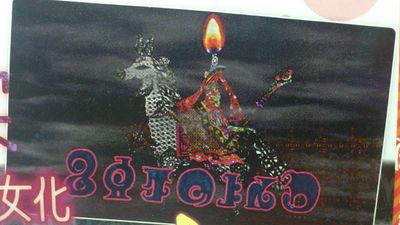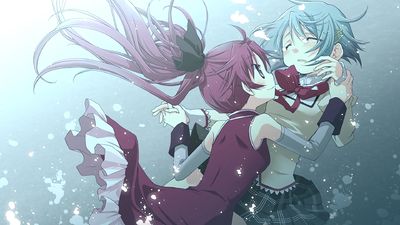Ophelia: Difference between revisions
Jump to navigation
Jump to search
m (→Trivia) |
m (→Trivia) |
||
| Line 33: | Line 33: | ||
:One is set near Dresden in eastern Germany. In this tale, a woman from Dresden goes out early one Sunday morning to gather acorns in a forest. At a place called "Lost Waters", she hears a hunting horn. When she hears it again, she turns around she sees a headless man in a long grey coat sitting on a grey horse.<br> | :One is set near Dresden in eastern Germany. In this tale, a woman from Dresden goes out early one Sunday morning to gather acorns in a forest. At a place called "Lost Waters", she hears a hunting horn. When she hears it again, she turns around she sees a headless man in a long grey coat sitting on a grey horse.<br> | ||
:In another German tale, set in Brunswick, a headless horseman called "the wild huntsman" blows a horn which warns hunters not to ride the next day, because they will meet with an accident.<br><br> | :In another German tale, set in Brunswick, a headless horseman called "the wild huntsman" blows a horn which warns hunters not to ride the next day, because they will meet with an accident.<br><br> | ||
**In some German versions of the headless horseman, he seeks out the perpetrators of capital crimes. In others, he has a pack of black hounds with tongues of fire. | |||
*Kyoko is known for being a hot-headed character. | *Kyoko is known for being a hot-headed character. | ||
Revision as of 05:22, 25 February 2012
Ophelia (OPHELIA) is the witch form of Kyoko Sakura, which is set to make an appearance in Puella Magi Madoka Magica Portable. Like the anime witches, she was designed by Gekidan Inu Curry.
| |||||||
Translations
From the March 2012 Dengeki PlayStation
Trivia
- Ophelia will also appear in Mami's Heart Pounding Tiro Finale game.
- Ophelia of Shakespeare's Hamlet was a young woman who had a famous and highly romanticized suicide. She went mad after the death of her father and being spurned by her love interest.
- Ophelia is riding a horned horse-like creature, which corresponds to the unicorn wind chime that represented Kyoko (opposite Sayaka's mermaid chime) in the BD version of episode 9.
- Ophelia can be thought of as a headless horseman.
- There are two German folk tales of a headless horseman:
- There are two German folk tales of a headless horseman:
- One is set near Dresden in eastern Germany. In this tale, a woman from Dresden goes out early one Sunday morning to gather acorns in a forest. At a place called "Lost Waters", she hears a hunting horn. When she hears it again, she turns around she sees a headless man in a long grey coat sitting on a grey horse.
- In another German tale, set in Brunswick, a headless horseman called "the wild huntsman" blows a horn which warns hunters not to ride the next day, because they will meet with an accident.
- In some German versions of the headless horseman, he seeks out the perpetrators of capital crimes. In others, he has a pack of black hounds with tongues of fire.
- Kyoko is known for being a hot-headed character.
Speculation & Observation
- Ophelia's familiars include geishas and goldfish.
- Fish have various symbolic meanings:
- Early Christians used a fish symbol to represent the Christian faith.
- In Buddhism, fish can represent abundance and fertility, or living beings who practice the dharma need have no fear to drown in the ocean of suffering, and can freely migrate (chose their rebirth) like fish in the water.
- Adaptability, change, and transformation in Greco-Roman, East Indian, and Norse mythology.
- Goldfish are associated with fortune and wealth. One of the eight auspicious signs of Buddhism is a pair of goldfish, representing the state of fearless suspension in a harmless ocean of samsara.
- Geishas were seen as a form of independence for females outside of the traditional wife and family role. Kyoko resorted to non-traditional methods and self-sacrifice to support her family.
- Fish have various symbolic meanings:
- It is suggested that the symbolism of unicorns represents innocence. The fact that Ophelia is riding a horse, instead of a unicorn, has been speculated that the horse represents the loss of innocence and nobility. The image ingrains the idea that the unicorn has lost its horn along with its splendor and that it has become a regular equestrian animal.
- Ophelia of Hamlet's main conflict was between obeying her father or her love interest. She had a fear of intimacy and eventually went mad under the pressure of her father's death and her lover's rejection of her. Kyoko lost her family and was spurned by Sayaka.
- The story of Ophelia's suicide by drowning is striking in a number of ways. First, her death seems to be passive: rather than straight-up committing suicide, as Gertrude (The Queen in Hamlet, who shares a name with the witch Gertrud) tells us, she accidentally falls in the water and then simply neglects to save herself from sinking. This seems to be a metaphor for the way Ophelia lives her life toward the end of the play – going with the flow, doing what her father tells her to do, rather making decisions for herself. Ophelia's "garments" "pull" her down, as if they had a mind of their own. Likewise, Kyoko followed wherever life lead her and was pulled down by her magical girl status.
- Ophelia is described as being "mermaid-like" with her "clothes spread wide." Even in death, Ophelia is figured as an erotic creature. Gertrude also suggests that Ophelia's drowning was natural when she describes Ophelia as being like a "native" creature in the water. Sayaka, who Kyoko killed herself in an attempt to reach, took on the form of a mermaid as Oktavia and her transformation into a witch featured water and the implication of drowning. Sayaka and Kyoko appear together underwater in the BD 5 artwork to the right.
- Ophelia's famous death scene is represented in various paintings, including one painting by Millais.
- Shakespeare readers have interpreted the Ophelia character to be linked to the idea of regret and unrequited love.
Gallery
Fanart
This section contains fanart images
Everything in the following fan gallery is created, or the comments accompanying them are created, for entertainment value and should not be confused with actual canon events of the Puella Magi franchise.- Ophelia witch card.jpg
- Ophelia form human fanart badass.jpg
- Ophelia fanart witch form.jpg
- Ophelia-art.jpg






